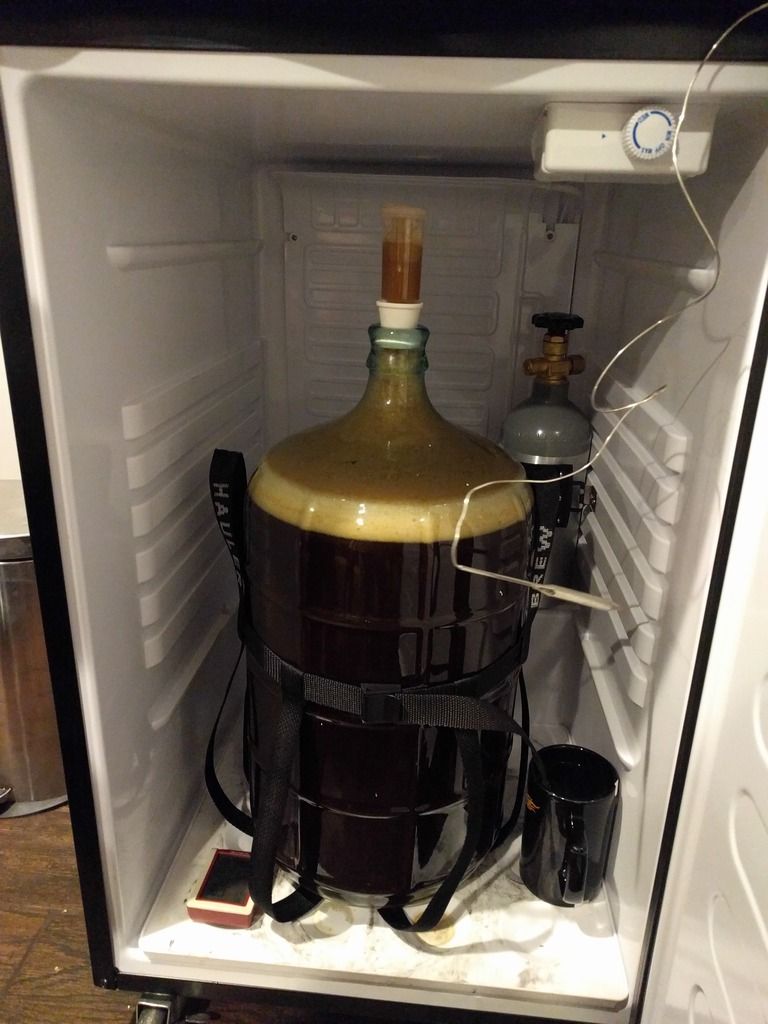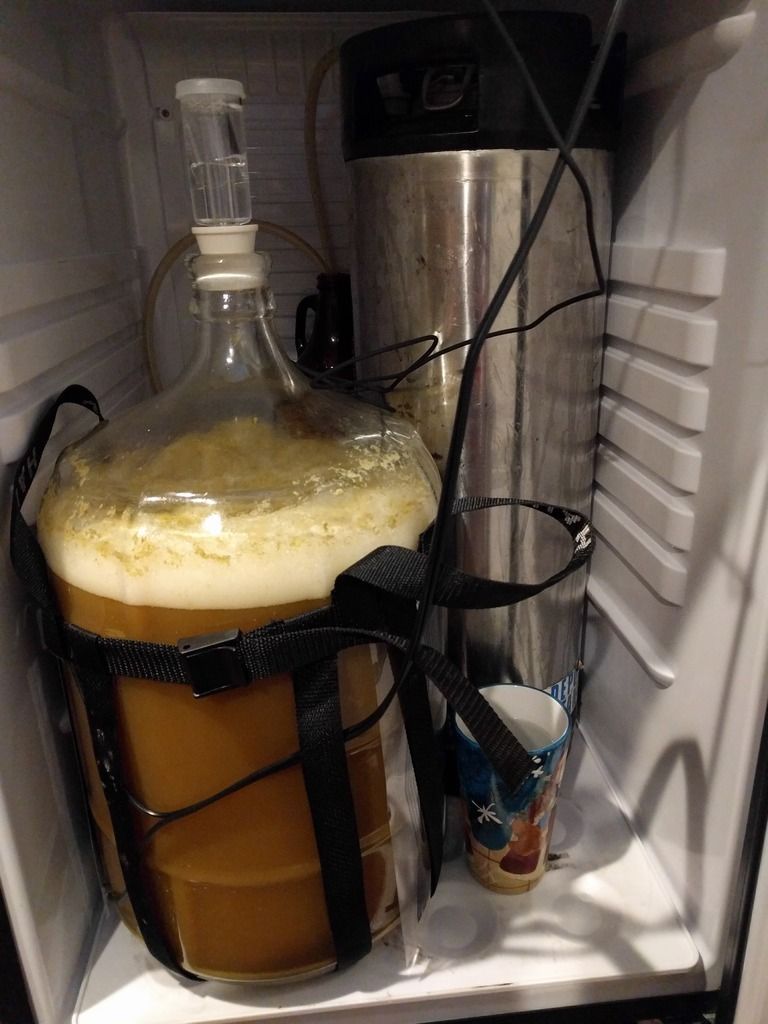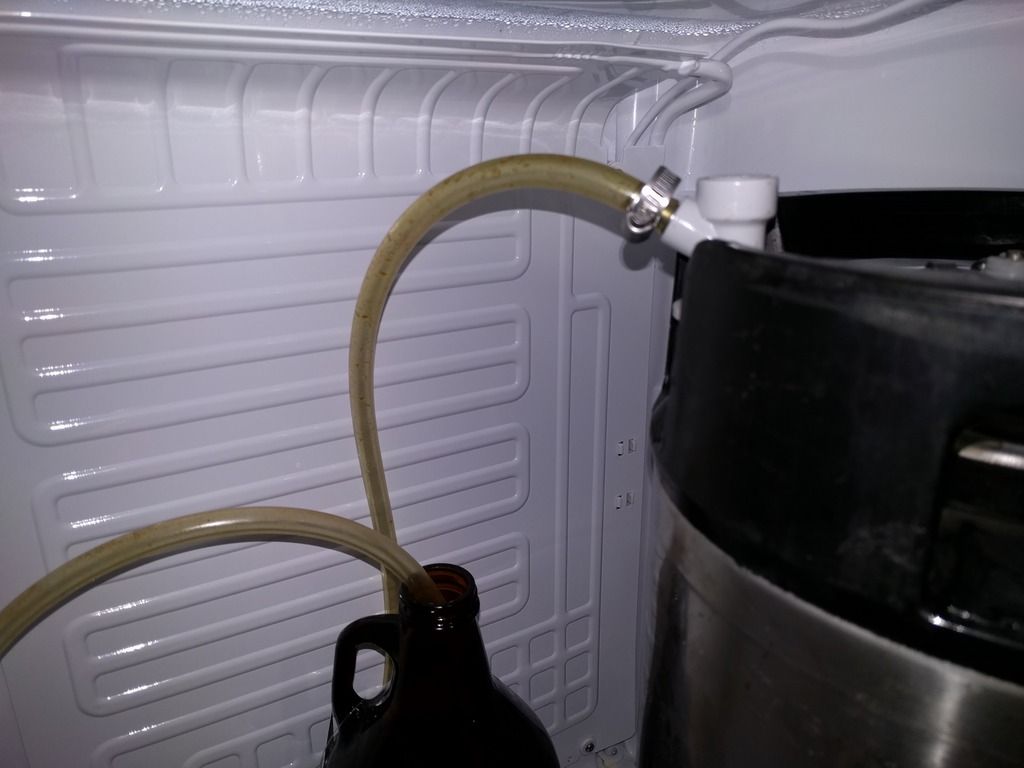Monsterc
Well-Known Member
Have any of you guys ever used a corney keg as you secondary.
Would it be ok to carbonate slightly while it's still fermenting?
Would it be ok to carbonate slightly while it's still fermenting?

You will have some sediment in the bottom of your keg if you secondary in it... also, youd have to really put the pressure to the beer to carbonate it much at all at fermentation temps. What would be the purpose of carbonating it in the keg while it is being secondaried? I have also read that fermenting under pressure will inhibit fermentation, not to mention if you are driving CO2 into solution, there will probably not be much inthe way of O2 left for the yeast to even be active. Again, what are you trying to gain?
If you want to secondary in the keg, to save a transfer, and sediment doesnt bother you, go ahead and do it. Pull the pressure relief valve once a day to relieve the pressure in the keg. When you are ready to carb, chill the keg, turn the PSI to 30psi for 24 hours, then dial it down to your serving pressure and bleed off the extra pressure. It will be fully carbed in 24 hours.
____________________________________
Primary- Orange Cascade APA
Secondary- AIR
Keg1- Centennial Blonde
Keg2- Oktoberfest
Keg3- Christmas Spice
Keg4- Fire In The Hole
Keg5- AIR
Keg6- AIR
Keg7- AIR
Keg8- AIR
Ohhhhhhhhh.
Well forget everything I just said.
BTW, congrats Pol!
It sounds like a lot of people do what I do also, which is to rack straight from primary to a corny, cold crash it, pull the trub that settles out during cold crashing in your first half pint, and then you have a full keg of bright beer. I like this method because 1) fewer transfers means less oxygenation, and 2) less to clean.
If you do want to allow your corny to secondary at all, just make sure you seat your lid with a little CO2 at first to keep it closed. If you're worried about overcarbonating, you can bleed off some pressure every few days, though if you let your gravity drop far enough (near terminal), it's unlikely that you'll run into issues overcarbonating.
SweetSounds - I have my oktoberfest in a corny for a secondary right now. This is the first time I have ever done this (used a corny as a secondary). Is it worth it to cut the dip tube to leave behind more yeast sediment OR is that just ruining a dip tube? I wouldn't want to have a dedicated lagering corny at this point in time. I just want to be sure that when I rack "out to out" via a jumper I'm not going to transfer all the yeast sediment with it (negating the main purpose of lagering......)
Sounds good. I think I may pull a pint or so first, just to see where to beer is at, then jumper it to the serving keg.
The main purpose for using the corny as a secondary is the small footprint compared to a 5-gal carboy, which fits nice in the keezer. Plus you get to take advantage of the closed system transfer.
Question: can the jumper line just be regular vinyl tubing, or does it need to be a Bevlex (that's what my picnic taps are connected with) or similar beverage line?

Is there a reason why you use the bev line for gas? Just cause you had extra, or does it have something to do with gas exchange thru the gas line? Just wondering......(the bev line is over-priced at my LHBS; I have been using the braided vinyl (for gas), I think that's what its called, it has the fibers braided in the line and is not quite as flexible as the reg. vinyl.)
Thanks for confidence in doing the keg-to-keg transfer! I will NOT move that keg!
I like your style. I was thinking about the MFL quick-disconnects and I couldn't really figure out why you would want them. Mostly b/c you would have to take off the QD any time you wanted to un-screw the line, so it didn't make sense to me how it was convenient. But your way of "any hose anywhere" makes sense. I'm a poor-ass graduate student, so I couldn't justify the extra expense of the flare barb fitting for each QD. Its something to think about in the future, tho.
Any other benefits of MFL QD?
Hopefully I can revive this thread for a quick question that I haven't found an exact answer for (though a couple on this thread are close). I have my first lager in primary now and I was planning on racking to a corny this weekend (two weeks of primary) and then letting it lager for two months. The lagering (and primary) is actually going on at a neighbor's house who has a fridge in the garage, but the keg will be served at our Oktoberfest party at our house a few houses away and down a serious hill. I don't want to kick up the sediment transfering the keg to my house for the party in two months. Cutting the dip tube is not an option because the keg is borrowed. So my solution was going to be to pull a pint or two before moving the keg and that's it. Will that work? Is there any benefit to transfering to a serving keg if I've already pulled off the trub in those first couple of pints? Obviously, I would like to limit the number of steps and transfers (especially because closed transfers may be above my pay grade at this point, and I would rather not ruin my first lager and the source of my beer for the party).
Thanks in advance
1. Yes, you can definitely use the secondary keg as a serving keg. Did you leave the beer in primary until it was at final gravity? If so, you won't have a tremendous amount of sediment. You'll have sediment in the keg pretty much every time, so use it to serve!
2. Let it sit room temp, definitely pull the hop bag out before serving. Crash cooling before or after dry hopping is up to you and your tastes.
In response to the guy last year with his ofest, i hope he transferred it to a new keg. Even drawing off the first few pints, it'll still have sediment that'll get stirred up when moving a keg. I'm of the opinion that if you are going to move kegs, transfer them to a clean keg before doing so, whether you draw off the first few or not. There's still sediment in the keg outside of the draw of the dip tube.
In response to the guy last year with his Ofest, I hope he transferred it to a new keg. Even drawing off the first few pints, it'll still have sediment that'll get stirred up when moving a keg. I'm of the opinion that if you are going to move kegs, transfer them to a clean keg before doing so, whether you draw off the first few or not. There's still sediment in the keg outside of the draw of the dip tube.
True, but if he just waits another 2-3 days it should settle out again. I guess it depends how urgently you want to start drinking off it again.
Would it not also be pretty wise to add gelatine or similar during secondary ferm?



Enter your email address to join: